AZoBuild spoke with Michael B. Lehrer from Lehrer Architects about the tiny home villages in LA that provide a creative way to help alleviate the issues faced by the homeless in the city.
Please could you introduce yourself, your background, and how you came to be involved in architecture?
I decided to be an architect when I was eight years old. A girl I had a crush on brought in blueprints of a high school her father designed. When I looked at those blueprints, they moved me deeply, and I decided that’s what I was going to do. I never changed my mind. Incidentally, her father was S Kenneth Johnson, the founder of Johnson and Mendenhall, which begot DMJM, which we begot AECom.
What is the ethos of Lehrer Architects LA? What drives your choice of projects to engage with?
Recently this has become very clear - our ethos in architecture is optimism. We like mission-driven clients and projects. While clients, probably most of them, come to us without any clear sense of mission, they never leave us without understanding what their mission is, which we embed into the essence of the architecture.
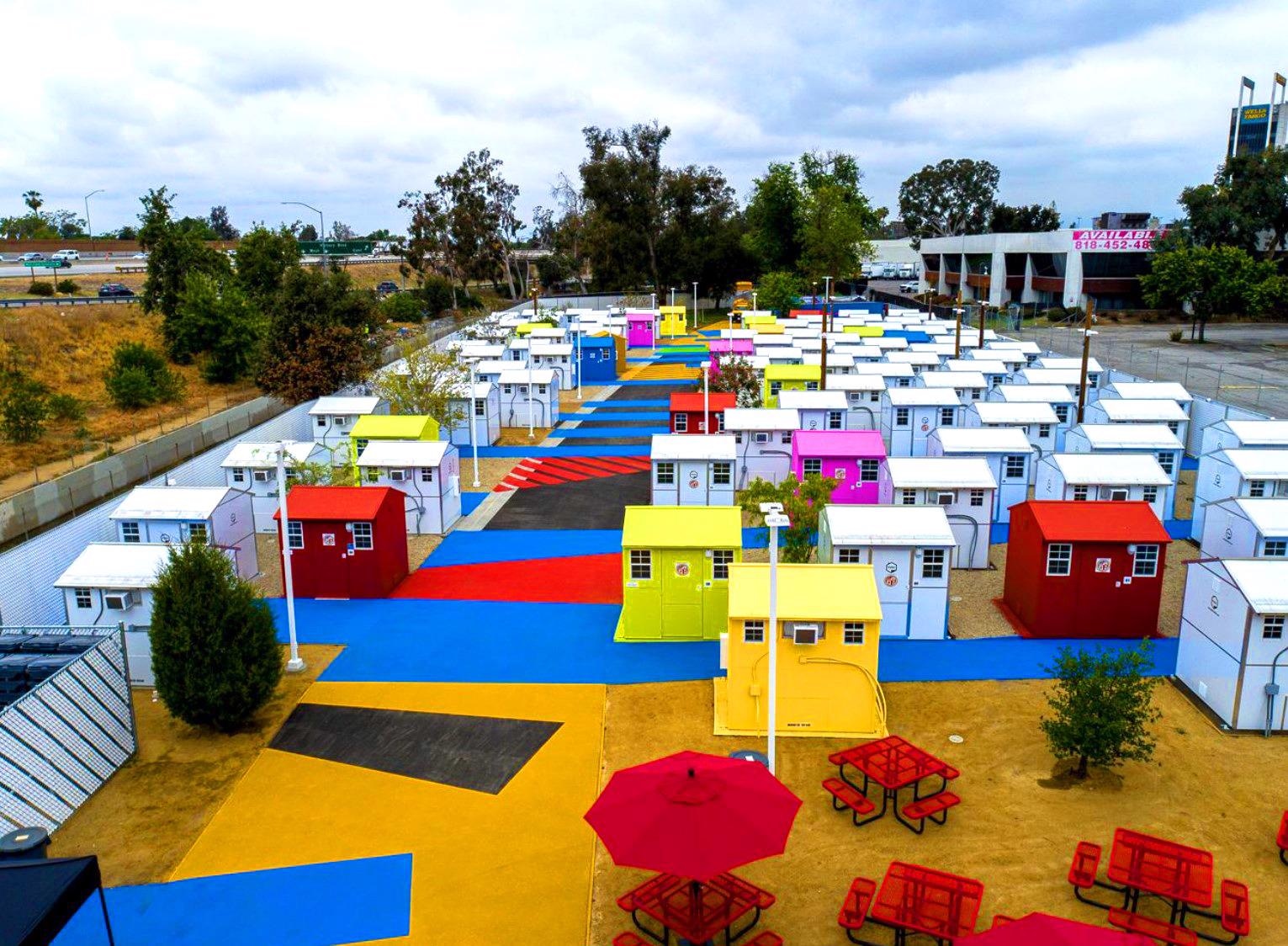
Alexandria Tiny Home Village. Image Credit: Lehrer Architects
How significant is the issue of homelessness in LA?
It is extremely significant. Between our good climate, the extreme unaffordability of housing in general, and the large expanse of the city, we have houseless people everywhere. It is hard on the city; but frankly, if all the houseless people were confined to Skid Row, no one else would give a damn. It is only because we see our sisters and brothers on the street in so many parts of the city that this issue has some urgency.
In the 23 years since I designed the Downtown Homeless Drop-In Center, and the almost 20 years I have been on the Board of Homeless Health Care Los Angeles, I have come to understand that this population is deeply heterogeneous, that solving the challenges of houselessness, mental health and well-being is not at all intuitive, and that the restoration of agency and autonomy to each human being is the sine qua non of their human dignity.
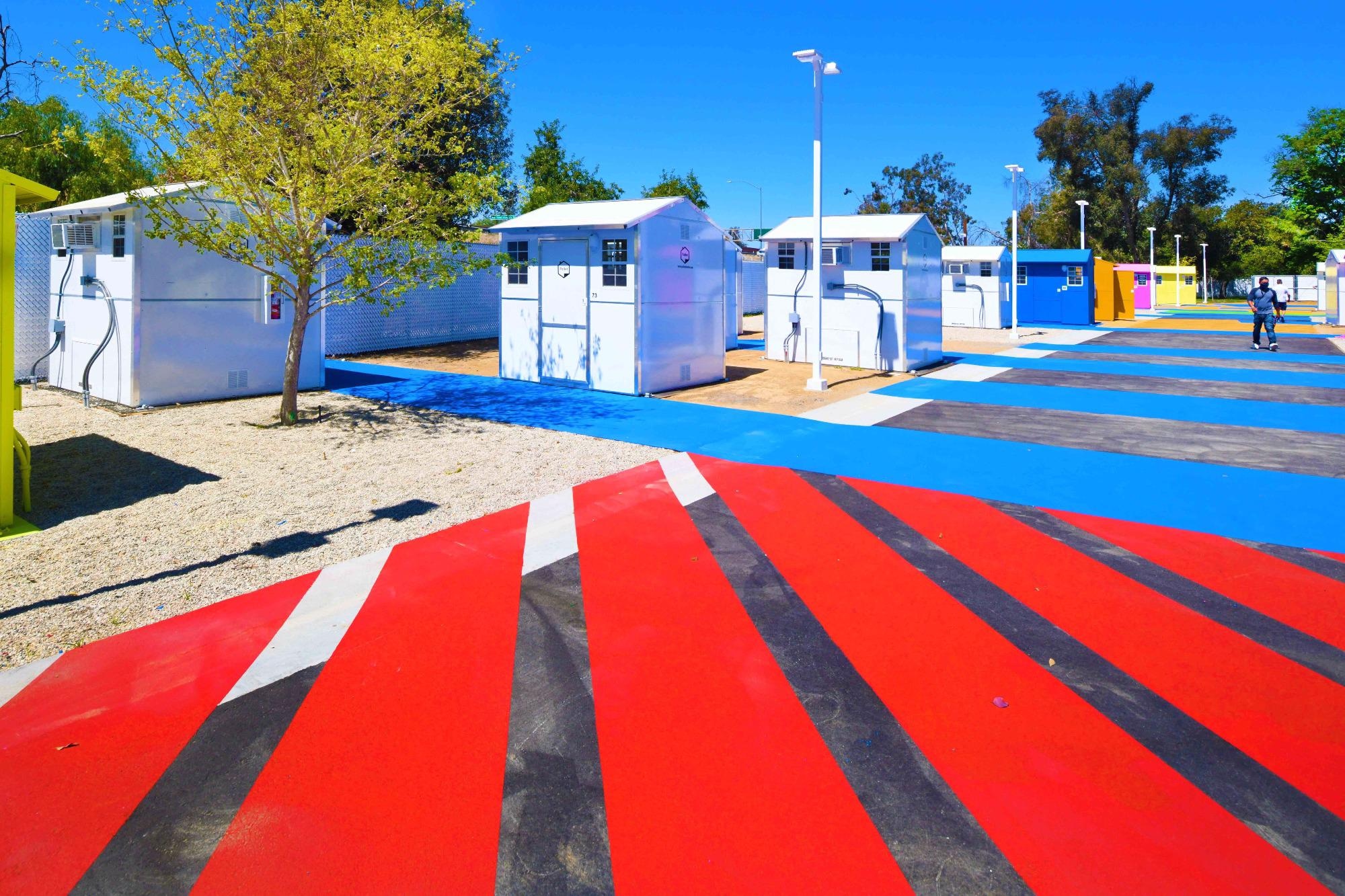
Alexandria Tiny Home Village. Image Credit: Lehrer Architects
Lehrer Architects has developed five different tiny home villages in LA that have been used to provide urgent shelter to the homeless community. What was the process of development like for these projects, both in terms of in-house design and collaboration with the Bureau of Engineering of the city of LA?
Pretty seamless and terrific. Unusually so. Everybody has been focused, has worked with a sense of urgency and mutual respect, and I believe the quality of our outcomes has only nurtured those things and has happily rebounded to everyone’s credit, appropriately. The Bureau of Engineering, City of Los Angeles, is our client and our collaborator. When we are hired, the site is already selected, a “bridging” document with a preliminary layout is done, and the various agencies and infrastructure providers, that have to come together to make a project are already in place.
What is the logic behind the organization of space in these villages?
The first order of business is to see how many units and support services can be fit on the property, with accommodation for access, fire lanes, and the like. Once that is optimized, then the next question is how you create a sense of urbanism: a campus, a village-like place where there is a “there there”, some sense of arrival and spatial hierarchy, and a way to differentiate and find one’s tiny home in a specific location.
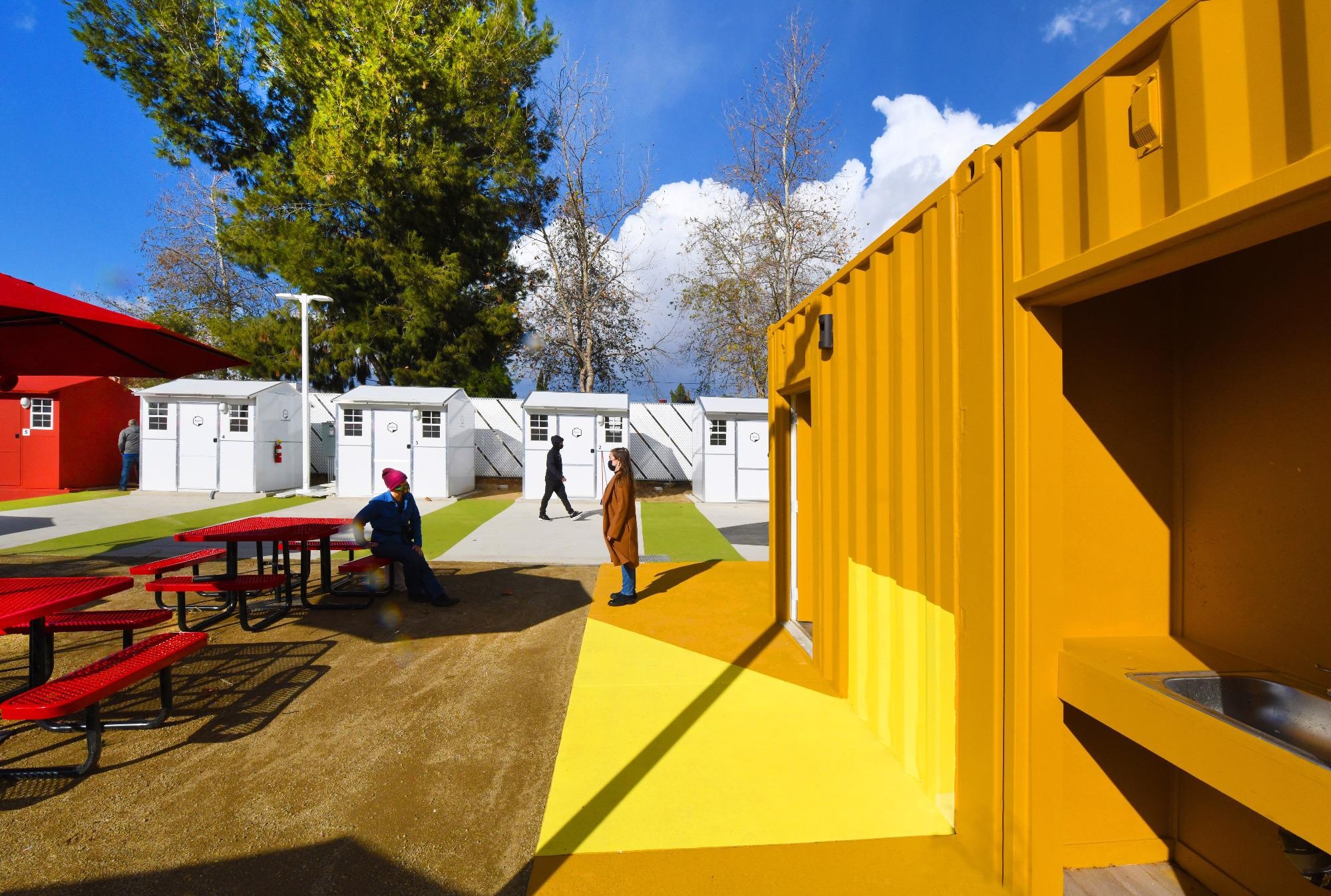
Chandler Bridge Tiny Home Village. Image Credit: Lehrer Architects
Interestingly, we use conventional principles of good urban design. This relies on a very highly developed set of visual skills: architect as placemaker, spacemaker, painter, and sculptor. Sometimes there’s an opportunity to shift two or three tiny homes to create a sense of place or to terminate a view appropriately, and that’s similar with the use of color, both on the tiny homes and on the ground plane. Color, it turns out, is a pretty cost-effective and easy way—when used well— to achieve significant visual transformation.
Could you describe the interiors and dimensions of these tiny homes?
The tiny homes, expertly designed by Pallet Shelter, have nailed it. They fit the sweet spot between permanence and impermanence. They look like homes from a Monopoly set, a child’s sketch of the essential home. They have tiny foursquare windows that are operable, they have two beds, one of which can actually be a desk and work surface, they have heating and air-conditioning, and their doors are lockable. They have built-in shelves, are white and fresh, and at 8‘ x 8‘ x 8‘, are really quite excellent, particularly for one person or two related people.
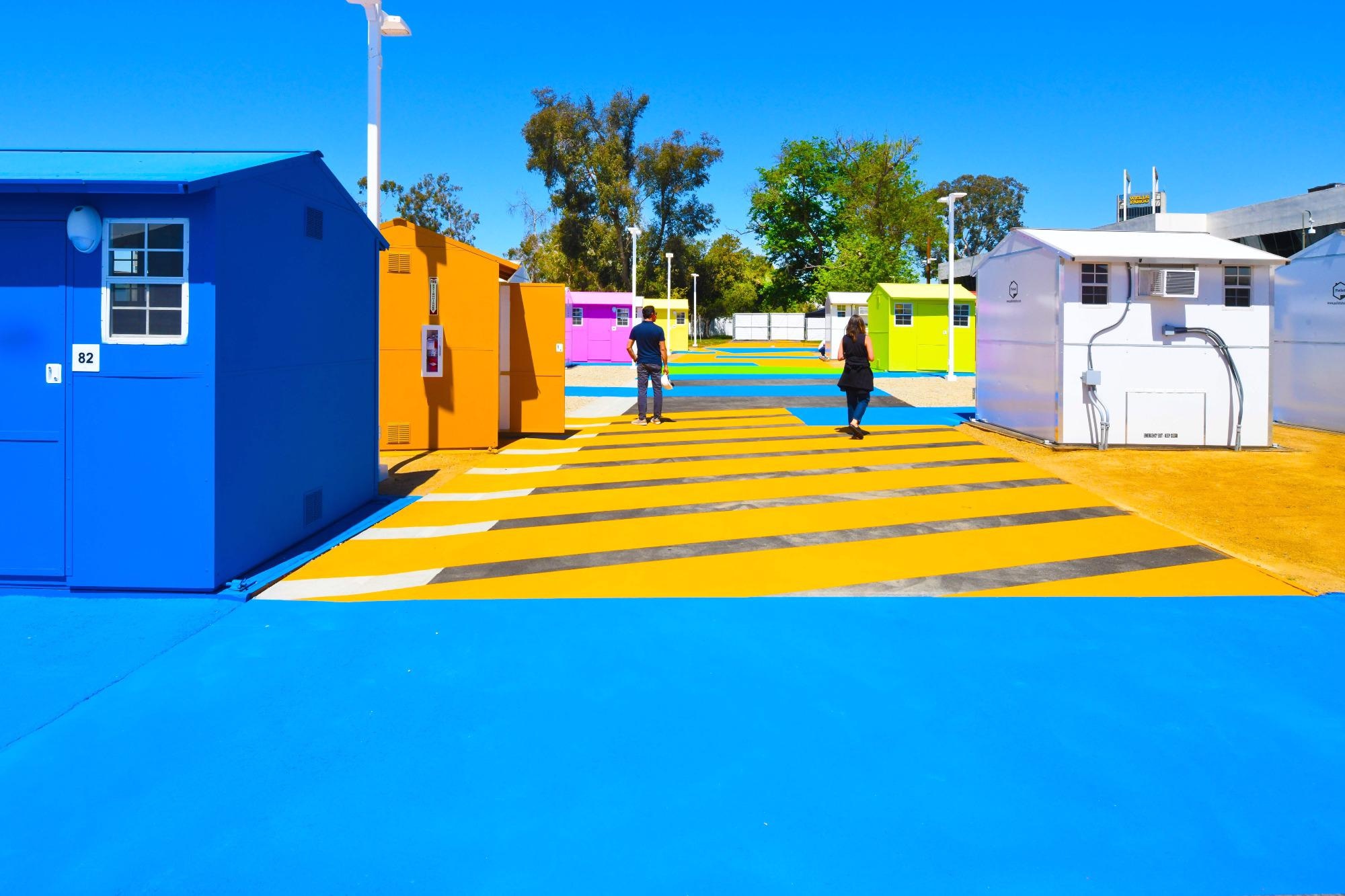
Alexandria Tiny Home Village. Image Credit: Lehrer Architects
These villages are mostly built on unused or “unusable” or oddly shaped plots of land. With an urban housing crisis at hand, how important is it to come up with creative solutions such as land revitalization?
It’s hyper-important. In our practice, the rubric is “there are no throwaway spaces“. The search must be constant for new ways of housing and sheltering these folks. And while these tiny home villages are not infinitely malleable, the ability to use the tiny homes as smaller pixels facilitates fitting on some weird sites.

Whitsett West Tiny Home Village. Image Credit: Lehrer Architects
What perceived effects have these tiny homes had on the issue of homelessness in their vicinity?
As the architects we are biased observers, but I would like to believe that these projects have significantly contributed to destigmatizing these places and these people, facilitating their placement throughout the city, and more importantly even making them welcome parts of every community in its quest to become a “COMPLETE“ community.
How long will these tiny homes last?
They are not considered permanent. I don’t really know. I imagine they can last for many years. But the easy truth is that because they are panelized it is extremely easy to replace any damaged or worn out panel with a new one. That is quite compelling. It is practically and politically and regulatorily important that these projects be “temporary“, but I believe that the need for these types of projects will probably always be there. There will always be folks who fall through the cracks and end up at the bottom of the social ladder, either temporarily or longer. Building projects like this as a natural part of our housing infrastructure are really important for us to be truly wholesome. Even looking at our five projects, seeing their urban texture next to conventional residential and commercial neighborhoods looks right. It looks like a complete community.
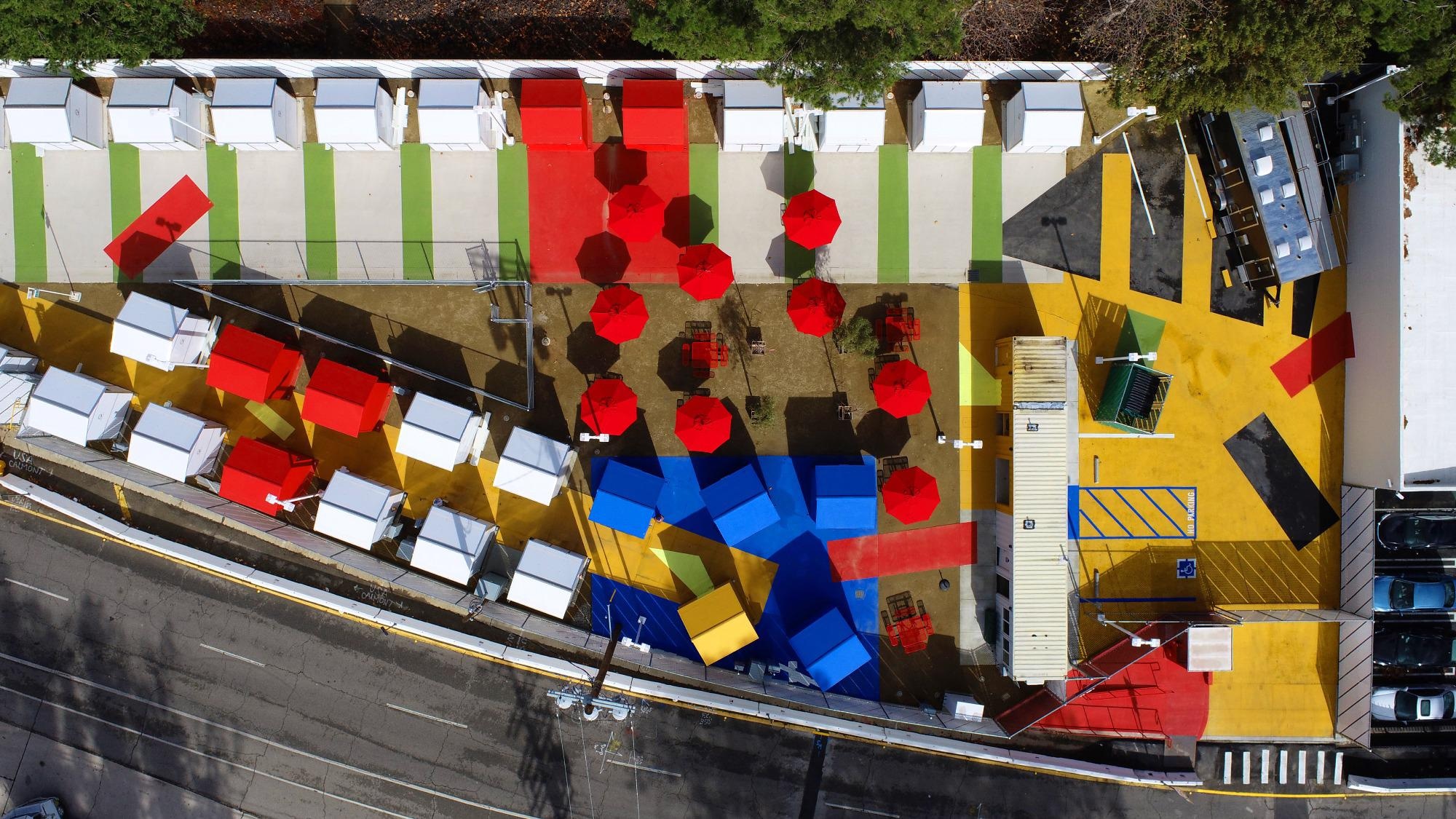
Chandler Bridge Tiny Home Village. Image Credit: Lehrer Architects
Which parts of these developments are you personally proudest of?
I am proud of the fact that we have made places that excite people and capture their imagination. They are actually a bit beautiful. That is not trivial. The least they must do is shelter people off the street. Beyond that, if they can capture the imagination of the culture and change it even a little bit, i.e. the culture’s attitude towards caring for these fellow citizens, that is a very good and important thing to do. That is impactful.
Are Lehrer architects working on any other similar projects, now or in the future?
Yes, some villages with larger than tiny homes, transforming motels into permanent housing or permanent shelters, and permanent housing for the formerly houseless. We are working on all these types of projects, and it is extremely gratifying and important work to do.
More Interviews on AZoBuild: In Conversation with Assumpta Nnaggenda Musana
Where can readers find more information?
You can visit our website LehrerArchitects and I have also given some lectures on these projects, one of which you can view here.
About Michael Lehrer
 Michael B. Lehrer, FAIA founded LehrerArchitects LA in his native Silverlake District of Los Angeles. The work–from the intimate to the monumental–is grounded in the idea that beauty is a rudiment of human dignity. He designs for the community with a reverence for light and space. Delight is a matter of extreme gravitas in the work. The work is to elevate every day and celebrate the community.
Michael B. Lehrer, FAIA founded LehrerArchitects LA in his native Silverlake District of Los Angeles. The work–from the intimate to the monumental–is grounded in the idea that beauty is a rudiment of human dignity. He designs for the community with a reverence for light and space. Delight is a matter of extreme gravitas in the work. The work is to elevate every day and celebrate the community.
Disclaimer: The views expressed here are those of the interviewee and do not necessarily represent the views of AZoM.com Limited (T/A) AZoNetwork, the owner and operator of this website. This disclaimer forms part of the Terms and Conditions of use of this website.